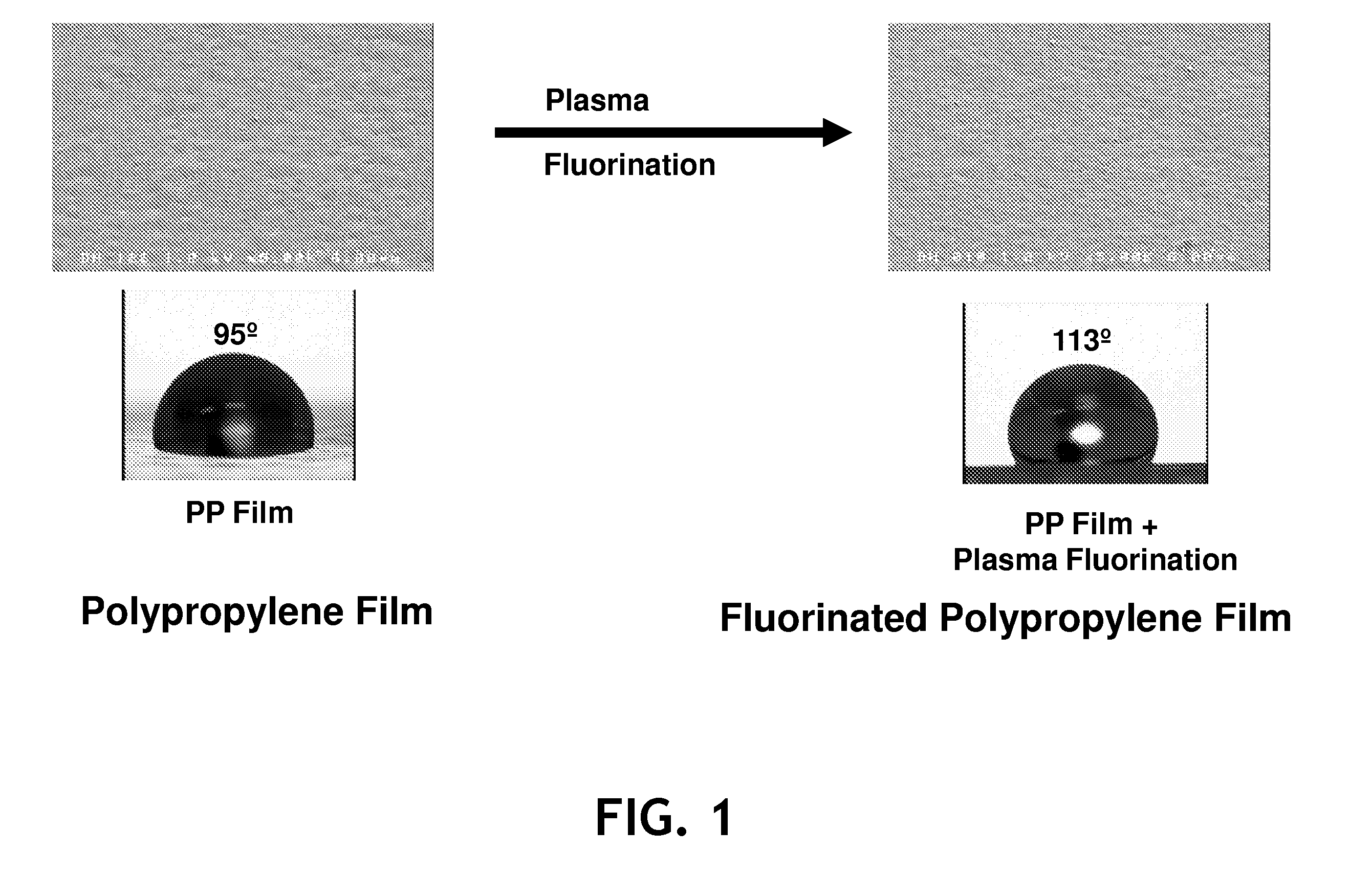High repellency materials via nanotopography and post treatment
a nanotopography and high-repellent technology, applied in the field of high-repellent materials via nanotopography and post treatment, can solve the problems of not always being able to produce these materials, achieving the super-hydrophobicity of lotus leaf, etc., and achieve the effect of high-energy surface treatmen
- Summary
- Abstract
- Description
- Claims
- Application Information
AI Technical Summary
Benefits of technology
Problems solved by technology
Method used
Image
Examples
examples
[0045]The inventive materials and methods of making them are exemplified by the following examples. As with the figures, the examples are not meant to be limiting.
[0046]Samples of films were cast on a 25.4-centimeter cast film line using a Leistritz twin screw extruder. The base resin was a polypropylene homopolymer, identified as Pro-fax® 6323, a 12 melt flow rate polypropylene homopolymer available from LyondellBasell, having offices in Rotterdam, The Netherlands. The target film thickness was 0.1 millimeters. Several additives were used at various levels. One additive was a nano-reinforced polypropylene concentrate containing 80 percent by weight polypropylene and 20 percent by weight octaisobutyl (OIB) polyhedral oligomeric silsesquioxane (POSS), available as MS0825 nano-reinforced polypropylene from Hybrid Plastics of Hattiesburg, Miss. Another additive was an internal fluorochemical (IFC) polypropylene concentrate containing 80 percent by weight polypropylene and 20 percent by...
PUM
| Property | Measurement | Unit |
|---|---|---|
| weight percent | aaaaa | aaaaa |
| weight percent | aaaaa | aaaaa |
| contact angle | aaaaa | aaaaa |
Abstract
Description
Claims
Application Information
 Login to View More
Login to View More - R&D
- Intellectual Property
- Life Sciences
- Materials
- Tech Scout
- Unparalleled Data Quality
- Higher Quality Content
- 60% Fewer Hallucinations
Browse by: Latest US Patents, China's latest patents, Technical Efficacy Thesaurus, Application Domain, Technology Topic, Popular Technical Reports.
© 2025 PatSnap. All rights reserved.Legal|Privacy policy|Modern Slavery Act Transparency Statement|Sitemap|About US| Contact US: help@patsnap.com



